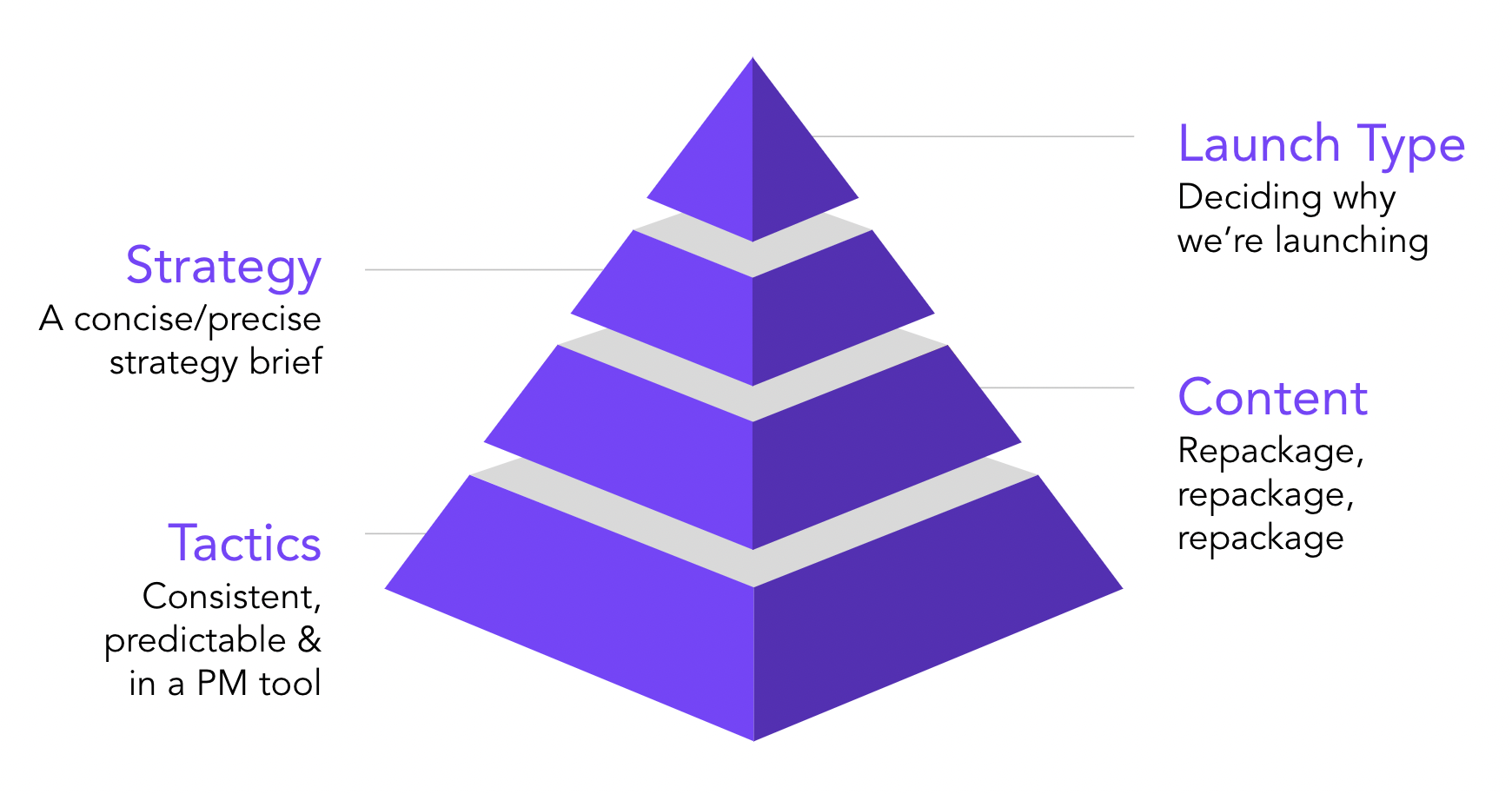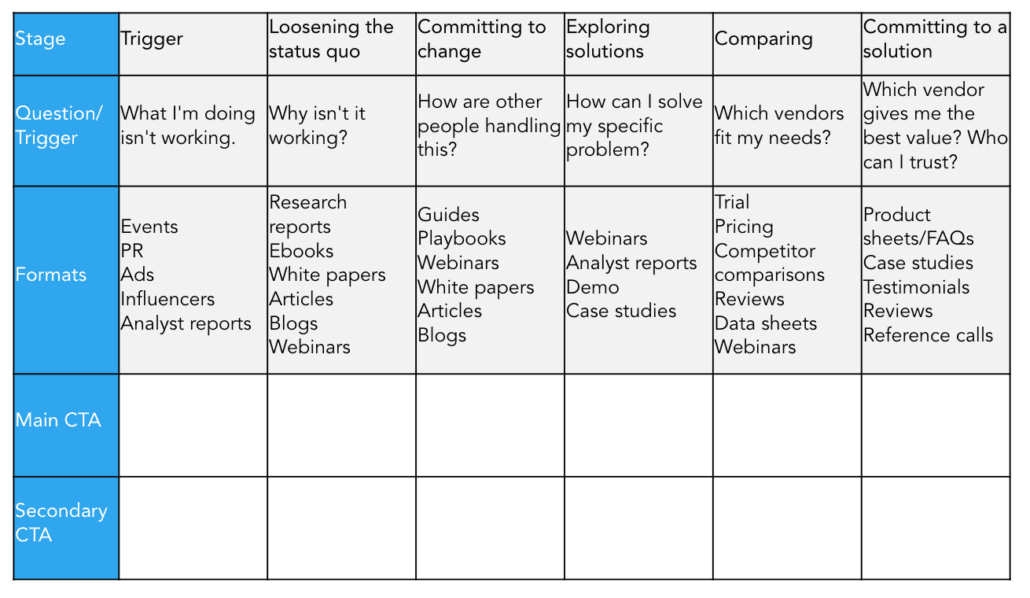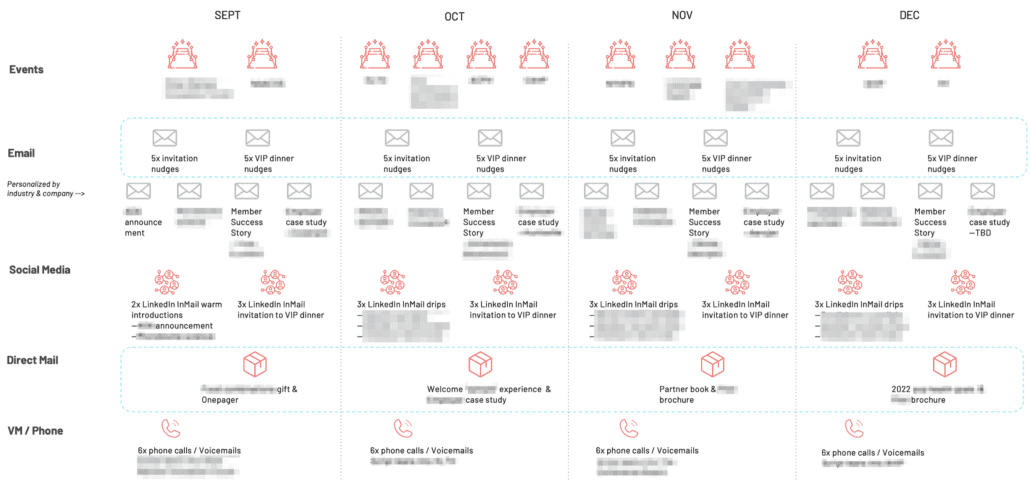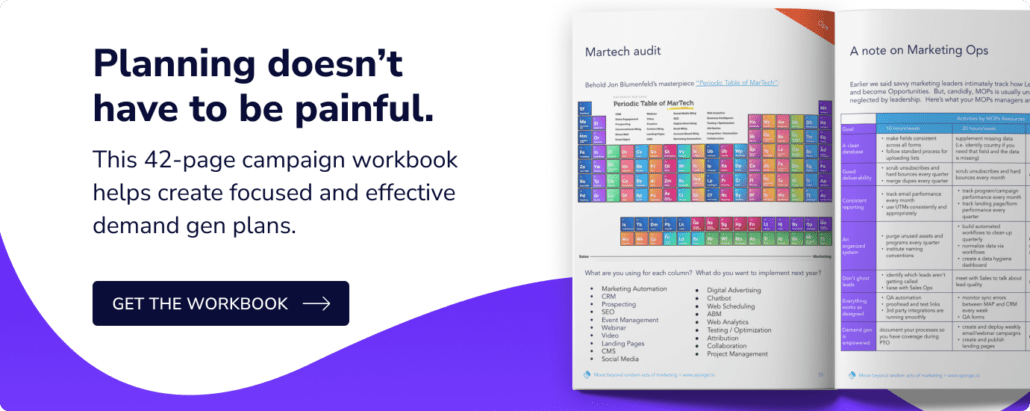Instead of winging it or color-coding a massive Excel sheet, our product launch playbook consists of 4 building blocks:
- Deciding why we’re launching
- Writing a concise/precise strategy brief
- Repackaging content
- Building tactics
>> Related: Responsibilities across MOPs, SOPs, Demand Gen & Product Mktg <<
Step 1: Why are even doing this!?
“Why are we even doing this?” can be an awkward question, especially after product has sunk significant time into a release. But this is the X-factor to a good launch. Press deeply until you unearth:
- The market’s realities. Are we solving an existing problem? Is it important and worth spending budget?
- Our product’s capabilities. Are we catching up? Is it ready to sell, or minimally viable?
- And our goal. Goals must be measurable and finite – “I need 5 beta customers” is a worthy product launch goal. “I want everyone to know our name” is not.
With the “why” in place, I strongly recommend Pragmatic Institute’s “Launch Type” framework. I was a “Type A” marketer, and this framework was a eureka moment for me. Now I only prioritize the highest impact tactics.
But! if you don’t have $1200 to spare… brutally triage which ~5 efforts will:
- make prospects aware of your new product
- help reps cross-sell customers
- increase sales literacy
- and/or drive pipeline
Step 2: Strategy
Next write a campaign brief that teases out the specific persona you’re targeting, your unique promise to them, and the evidence that makes it believable.
Briefs ensure:
- Campaigns are compelling. This is the antidote to milquetoast launches!
- Everyone is oriented: designers, PR, copywriters, marketers, reps, sales leaders, etc.
- We only build tactics that suit the goals and persona.
- We have an objective yardstick for evaluating creative, copy, tactics, and channels. If it doesn’t suit the strategy, it’s a nonstarter.
Step 3: Content
You have to generate a lot of content during a launch, including emails, blogs, contributed articles, Sales training, BDR scripts, datasheets, FAQs, demo videos, press releases, etc.
But Product Marketing utterly lacks the time to do it all. Instead of writing five long form papers, task the Demand Gen team to relentlessly repackage and distribute a core asset:
- Transcribe webinars, videos, or SME interviews to create new content.
- Cut longer content a into blog series, or bundle a bunch of blogs into a gated asset.
- Use more palatable names than ebooks, white papers, datasheets, webinars, and case studies.
- Do not underestimate product pages. Your website is the product’s “welcome mat”.
Step 4: Tactics
Oops, now we actually have to do it! Partner with demand gen and use a project management tool like Asana:
- Commit to realistic deliverables only. Under-promise and over-deliver.
- Don’t forget that “sales enablement” is a VIP channel.
- Stay the course for a quarter, then evaluate and adjust.
If you need to articulate the tactics to leadership, I really like this format:
FAQs
What’s a campaign brief?
A campaign brief is a document that outlines the key details and objectives of a marketing or advertising campaign. It serves as a guide for the individuals or teams responsible for planning, executing, and evaluating the campaign.
What is a gated asset?
A gated asset refers to a piece of digital content, such as an eBook, whitepaper, webinar, or other valuable resource, that is made available to users only after they provide certain information or take a specific action.









